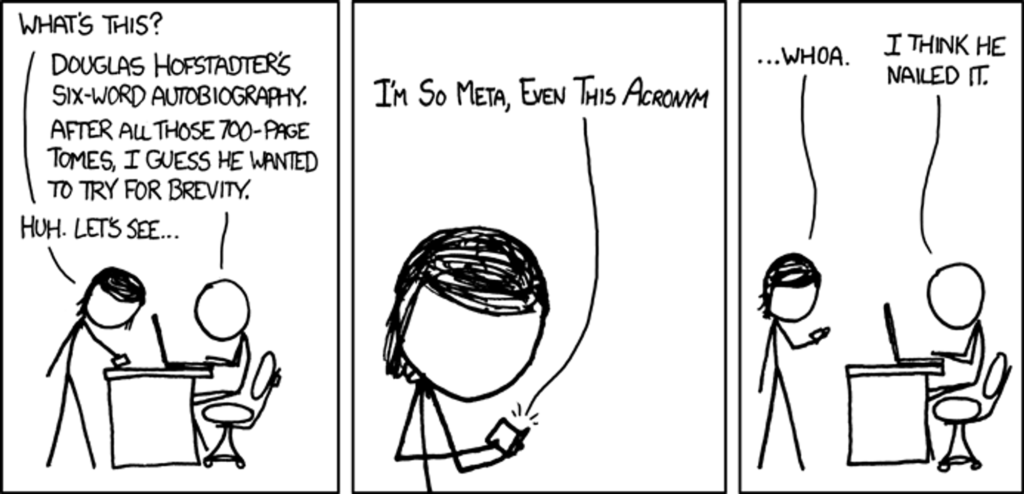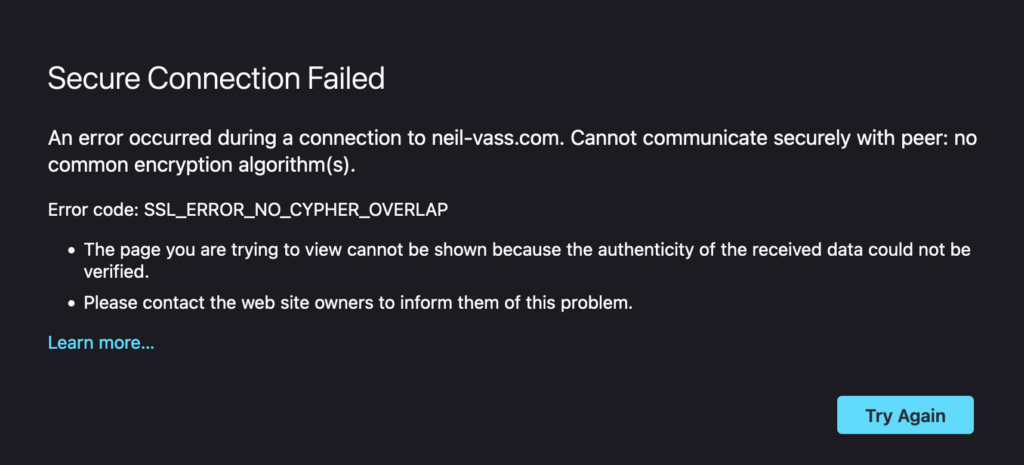Every blog ends up here at some point: blogging about the process of writing posts, about the tech setup that makes the blog work, about the way the blog is laid out and organised … I’m planning to mention that stuff just once, in this post, and then get back to the kind of things I usually write about and that everyone’s probably more interested in.

The short version:
- My current setup was great to get started with, but various things have annoyed me
- I’m going to explore different options and see if there’s something more satisfying
- I’ll post notes about that at neil-vass-2.com for anyone who cares, while this neil-vass.com site carries on with its usual content.
Want to know more?
The blog origin story
I’ve never had a personal website before this one; I did write a fair bit on social media and elsewhere, about various “working in tech” topics, and enjoyed it. Scott Hanselman’s “Your words are wasted” post (from 2012!) was one of several things that got me thinking about starting my own site.
I knew it’d be very, very easy for me to get drawn into spending hours on tech stack choices and tinkering with various ways to set up a site. It’s hard enough to make time to write the kind of posts I want to share, and get into a regular writing habit, so I decided to spend as little time as possible on the setup. One web search for a recommendation on simplest way to get started, picked the first one that looked reasonable, and did the minimum to get it ready to post.
This was absolutely the right choice – I might still be messing about with options today if I hadn’t just ignored it! But I’ve had a few annoyances with my choice so I’m starting to look at something different.
A no-code solution
I went with a managed hosting option – get domain registered, WordPress hosted, all covered by an easy-to-use interface so you don’t need to know any of those details and can just write posts. That’s kind-of been true. Except sometimes, when I’ve done something (not sure what) and I log in to find this kind of thing at the top of the management console:
Notice: fread(): read of 8192 bytes failed with errno=21 Is a directory in /home3/neilvass/public_html/wp-includes/pomo/streams.php on line 189 Warning: Cannot modify header information - headers already sent by (output started at /home3/neilvass/public_html/wp-includes/pomo/streams.php:189) in /home3/neilvass/public_html/wp-admin/admin-header.php on line 9
It’s saying … there’s PHP somewhere? And some files or folders I’ve never heard of have errors?
I don’t think this is particular to the company I picked. WordPress is extremely popular, and does have a habit of unexpectedly dropping you into “looks like I need to be a WordPress expert after all” situations. It was one of the examples I saw Seb Rose use in his talk about issues with the promise of all no- and low-code solutions – there’s always some complexity you get dropped into.

Joel Spolsky named this “The law of leaky abstractions”:
“the only way to deal with the leaks competently is to learn about how the abstractions work and what they are abstracting. So the abstractions save us time working, but they don’t save us time learning.”
I feel like WordPress (and the “helpful” managed interface on top of it, that caused me so many issues I ended up turning it off) are fairly confusing for new users like me. I could go off and learn lots about WordPress, but if I’m pausing to examine my choices, I’d like to start much more simply and see if I get led to WordPress as a good choice on my own.
Observability
On December 30th, 2022, I was very pleased to see a tweet from Steve Messer saying he’d included some of my posts in his reading list picks of 2022. I then got a shock when I read the list entry – he recommended my “how to disappoint people” series but had to link to the Web Archive versions, as my site was unavailable when he went to write his post.
My response: “’Site monitoring by waiting to see if you’re mentioned in an end-of-year roundup and they say it’s down’ is an unusual strategy, but here we are.”
I got this error, both for the public site and when trying to get to WordPress admin:

Using the web chat function at my hosting provider, they told me:
- There was a known issue with SSL installation on Cloudflare CDN (I’m using a CDN?)
- Now that I’d raised this, they’d remove that CDN from my setup, then we’d need to wait up to 48 hours for the change to propagate and my site should be available again
- They had no way to check how long it had been unavailable
I had assumed the company I paid for hosting would be watching for sites disappearing and flagging that to me, and that some kind of log would tell them when major issues started – but you know what they say about assumptions.
Now, I could set up something like StatusCake to monitor a page and message me if it vanishes — but that doesn’t help me with all the other things that might go wrong. Another time, I discovered (from a reader telling me) that some images weren’t showing on one post – and looking through other pages, they had missing images too. It was a strange mix of some missing altogether, others seeming to appear after a hard refresh. Back on the web chat, the provider found the cause was a WordPress plugin … their own helpful WordPress plugin that I wasn’t using, but was still enabled.
Unexpected issues will always come up with computers, but it’s the lack of visibility into them that’s bothered me here. I loved a Charity Majors talk about this: “If it’s quick and painless to make changes to your services, and to spot and fix problems, then you’ll free up incredible amounts of time to focus on the important stuff.” And I’ve been reading the “Observability engineering” free ebook from Charity and her colleagues. There’s lots in there about configuring things so you don’t have to think in advance about all the things that might go wrong, and having tools to confidently investigate issues and understand causes. I’d love to experiment with that.
Next steps
I plan to carry on using neil-vass.com to write my usual blog posts – and without distracting myself too much, I’ll be experimenting with different setups at a new neil-vass-2.com domain I’ve bought. If you look right now, as I post this in May 2024, there’s just a plain “Hello, World!” page.
So, what am I hoping to get out of this?
- Get a blog setup that I’d be happier to use – and then switch neil-vass.com to use it!
- Learn things
- Have fun
Let’s see how it goes…